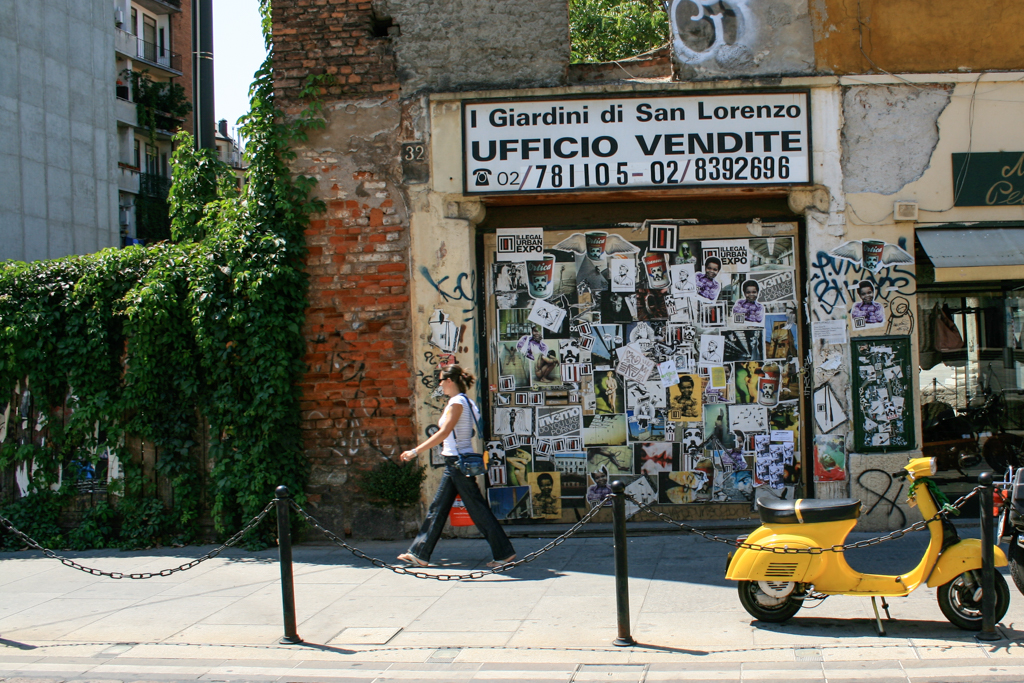Turning on the Tv
writer: russell j.t. dyer; posted: jul 2009; revised: oct 2017
Shutter Speed Priority is basically the same as manual mode, except that when you adjust the shutter duration, the aperture is automatically adjusted in response, based on the inter light meter reading for proper light exposure. It’s usually abbreviated as S on Nikon cameras and Tv (i.e., Time Value) on Canon cameras. Check your camera’s manual to be sure.
Here, the shutter speed to 1/125 of a second since it was sunny. The woman walking by was moving quickly, so the fast shutter speed kept her image from being blurred.
Useful Situations
This camera exposure mode is useful when you’re photographing a moving subject. For instance, if you’re photographing a child or an animal. They don’t always sit still enough. It’s not just a matter of them fidgetting, but relocating themselves, moving further away or into different lighting. Depending on how active your subject, will depend on how short of time you’ll want your camera’s shutter to be open. When shutter duration is your priority, you may not have time to conversely adjust the camera’s aperture to accommodate your shutter duration setting. In such a situation, Shutter Priority is probably best.
Other Considerations
In Shutter Speed Priority mode, you will probably need to set your metering method to evaluative or average mode, as opposed to center weighted or spot metering mode. With more precise metering, you run the risk that the camera will lock in on a small part of your subject (e.g., a dark patch on a Dalmatian dog) and throw off the camera’s light meter reading. So using the evaluative or averaging method is probably best in most situations.

